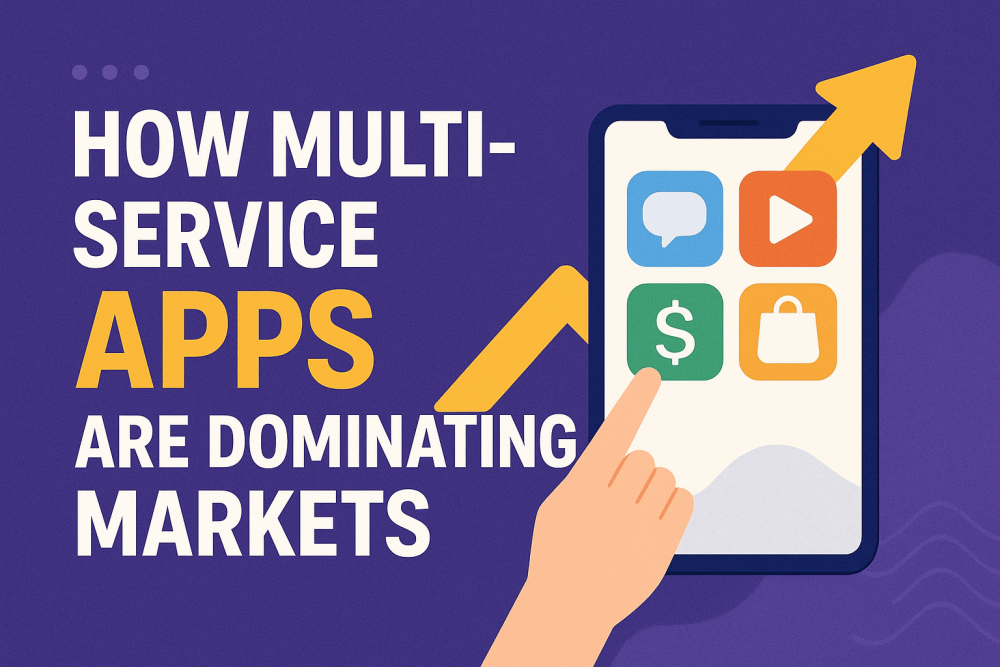The digital landscape is undergoing a significant transformation, which in turn is shifting from a siloed model of single-function apps toward a consolidated ecosystem. Also, the shift is driven by rise of Multi-Service Apps, which is also known as ‘Super Apps.’ These platforms are pioneered by giants such as WeChat in China along with Grab and Gojek in Southeast Asia. The super apps aggregate a diverse range of functionalities, such as messaging, ride-hailing, e-commerce, and financial services, into a single, combined application. Further, the integration has proven to be a highly effective strategy for achieving market dominance by becoming an indispensable component of the user’s daily life.
The Unstoppable Appeal of Convenience
The primary driver of the Super App’s success is the answer to a core user desire for convenience and reduced app fatigue. Also, currently where users may have dozens of apps installed, the mental and physical friction of switching between separate platforms for disparate needs such as ordering food, transferring money, chatting with friends, or booking a doctor’s appointment is significant.
The multi-service app solves the issue by offering a single sign-on, unified interface, as well as consistent experience across all services by centralizing essential daily activities. The multi-service app solves the issue by embedding themselves deeply into the user’s routine, making the platform a digital necessity rather than just an option. This creates powerful network effects. Additionally, the more services the app offers, the more users it attracts; the more users it has, the more third-party businesses want to integrate, forming a self-reinforcing loop that solidifies market control.
Leveraging Financial and Data Integration
Further, the critical feature that differentiates a Super App is the integration of a native digital payment system or wallet such as GrabPay, WeChat Pay. Additionally, the embedded financial layer acts as the joint that ties all disparate services together.
- Frictionless Transactions: The super app have the ability to enable seamless, instant, in-app payments for every service ranging from paying a driver to buying groceries as the app can reduce the need to frequently input credit card details.
- Financial Inclusion: The embedded financial services often serve as the first point of digital finance for the users, which in turn makes the app a foundational utility in developing markets.
Furthermore, The app gathers data across diverse activities such as mobility, shopping, communication, and spending and in turn the platform gains high quality, cross-functional user data. Additionally, the high quality, cross-functional user data is crucial for delivering personalized offers as well as services, which in turn significantly increases cross selling opportunities as well as marketing efficiency, thereby boosting overall revenue per user.
Strategic Advantages for Businesses
The multi-service apps offer profound strategic advantages that solidify their market dominance for the companies by:
Lower Customer Acquisition Cost (CAC):
The first step includes when a customer is acquired for one service such as ride-hailing, the cost to introduce them to a new service such as food delivery within the same app is negligible.
Diversified Revenue Streams:
Dominance is maintained by creating multiple avenues for income commissions on services, targeted advertising leveraging rich user data, and premium subscription models—insulating the business from volatility in any single sector.
Ecosystem Control:
The final step involves providing a platform for third-party mini-apps as well as services as the Super App essentially controls the digital operating system for a wide array of industries, which in turn helps to effectively push out single-service competitors.
Conclusion
Multi-service apps are much more than a collection of features; they represent a fundamental paradigm shift in how digital commerce and life are organized. By prioritizing unparalleled convenience, establishing a powerful financial backbone, and leveraging unified customer data, these platforms create ecosystems that are nearly impossible for niche competitors to dislodge. As users globally continue to demand simplicity and integration, the Super App model is set to remain the most powerful and dominant template for digital market control for the foreseeable future, making the concept of a single, all-encompassing digital destination a global reality.
